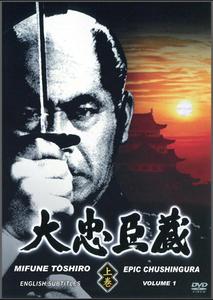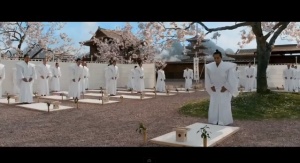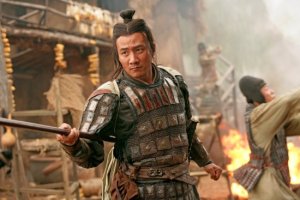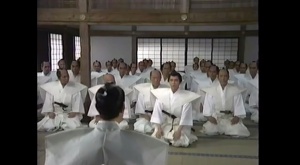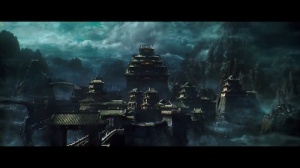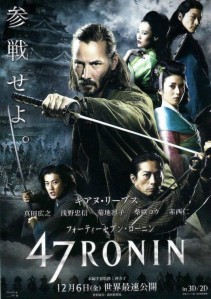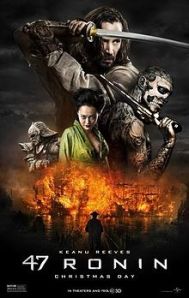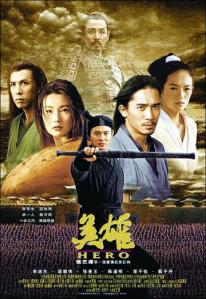Interpreting “The Tale of Princess Kaguya"
There was a moment, when I was returning home after watching “The Tale of Princess Kaguya” that I thought, “Ah, ha!” If I was Buddhist, I would have called it satori—a moment of enlightenment. Suddenly, I wanted to see the movie again.
At my moment of cinematic satori, I was remembering the playful segment between the princess as a toddler and a frog. She imitates the frog and eventually catches it after frightening her adoptive father.
In Japanese the word for frog is “kaeru” (蛙)、but kaeru is also a homophone for the dictionary form of the verb meaning to return home, “kaeru” (帰る). Toward the end of the movie, that is what the princess must do. She must return to her people and to her own kind. From the very beginning, even for those unfamiliar with the tale of Kaguya, this is poetically foreshadowed during this delightful frog passage.
This foreshadowing of the princess’ return to her own world is only one reason why the frog is significant. There’s also a Japanese saying “Kaeru no ko wa kaeru” (蛙の子は蛙)or even a frog’s babies are still frogs (no matter the appearance). And so is the case with the princess. The saying means to assert that one is what one is born to be and at one time was meant to reinforce the class system.
As I have discussed previously, kaeru is also a homophone for kaeru (変える) meaning to change or transform such as transform something into something else and this is very much a part of the story as well.
The movie “The Tale of Princess Kaguya” is filled with poetic references to time and seasons, but it is also about responsibility and the conflict between duty and love (giri and aijō) with a Buddhist twist. The giri-aijō conflict is a common device in Japanese literature. The movie made me consider the difference between a country like America that doesn’t have princesses and a country like Japan which has a constitutional monarchy and thus has an emperor, empress, princes and princesses.
The story of the bamboo cutter and Princess Kaguya is old, References are made to it in the oldest Japanese poetry anthology, the “Manyōshū” (circa 759 AD). The bamboo cutter Okina (翁 meaning old man)discovers a small doll-like girl in a bamboo stalk. When we first see her in the movie, she resembles a doll from a Hina-Matsuri arrangement, then she become a regular almost-human infant (During Hina-matsuri, girls set out their dolls which represent the full Imperial court). She’s just one that grows as fast as a bamboo.
Okina (Takeo Chii) and his wife Ōna (媼 meaning old woman or mother) raise her as best they can. The peasant kids call her “Little Bamboo” while her adoptive father Okina calls her princess. An older boy Suteru (Kengo Kora) attempts to protect her and they are fond of each other.
In the bamboo forest, Okina finds gold and fine silks. He rejoices, knowing that the divine spirits mean for him to raise her as a princess. He takes her to the capital of Kyoto where she is schooled in court etiquette by Lady Sagami (Atsuko Takahata).
Eventually, she attracts numerous suitors. Five of them, she gives impossible tasks. The men all fail and one of the men dies during his quest. This saddens her, but it doesn’t stop the Emperor for attempting to force his attentions on her. Notice when in a close up of the emperor behind him the Chinese character for negation (not) is framed behind his head (不不). The emperor is also not worthy of this princess, even if, as according to myth, he is supposed to be a direct descendant of the sun goddess.
Of course, this princess longs for Sutemaru and to see him and her childhood home again.
I wonder if the Disney princess is as popular in Japan as in the United States. The fate of the princesses in Japan has been the topic of much sympathetic talk. While American audiences are quite familiar with the travails of the British royalty, they are not with the Japanese monarchy and aristocrats.
Whatever one might say about the Emperor Hirohito, now called Emperor Showa, he did stubbornly refuse to take courtesans in order to produce a male heir to the throne. His wife had already given birth to four girls (three of whom survived into adulthood). Then in 1933, his wife Empress Kōjun, produced Akihito and two years later, his brother Prince Hitachi. Their last child would be a daughter.
When Akihito was the crown prince he fell in love with the eldest daughter of an industrialist (flour milling), Michiko Shōda. Her family was Catholic, which is unusual for Japan, and she attended Christian schools. Christianity had been outlawed until the Meiji era and thus was practiced secretly for a while, but by the time of Akihito and Michiko, Christianity, including Catholicism were practiced in the open in Japan.
Not only was Michiko not Buddhist or Shinto, she was also a commoner and the first commoner to marry into the Japanese Imperial Family. Empress Kōjun opposed the union. The psychological pressure on Michiko was so intense, she was unable to speak, once in the 1960s and once in the 1990s.
The current crown prince of Japan, Naruhito, has commented that in comparison the Royals of Great Britain are more relaxed because Queen Elizabeth can pour her own tea and serve sandwiches to her guests. His future-wife attended the top university in Japan, Tokyo, and went on to study in England. She, Masako, like her mother-in-law suffered similar psychological stress. In Japan, being a princess, particularly a crown princess is not something to be envied.
Students of Japanese might easily relate to Empress Michiko’s speechlessness when they try to deal with the complexities of keigo or polite speech. When do you use verbs mairu or irrasharu instead of kuru (to come) or iku (to go)? In Japanese, levels of formality are one of the most important factors in sentence construction. The kind of formal speech you might use in an office is different still from the verbs and noun phrases used by the emperor and his court.
For speakers of Japanese, you can hear the change in verb inflections and in the word usage in “Kaguya.” We see Kaguya as not only a child becoming an adult, but she is also becoming a princess. Her stifled spirit might somewhat reflect the reality of Empress Michiko and Crown Princess Masako but Kaguya lives in ancient times.
Unlike Empress Michiko and the Crown Princess Masako, Kaguya is under the social customs of a different era. During the Heian period (794 to 1185 C.E.) daughters became tools for political power. The Fujiwara family rose to power by marrying its daughters into the Imperial family (Fujiwara period was 900 to 1200 AD). However, the political power rarely resided with the women so women without men to support them lived precarious lives. Who would protect Kaguya after her adoptive parents died? Who would feed her? Who would cloth her? Noble women would fall into poverty without a male relative to support them.
So because Kaguya is a princess and because she is an alien or supernatural being, she could not find love with Sutemaru. In Japanese, a frog won’t turn into a prince (although there is one old folk tale where a frog does turn into a man but not into a prince). In “Kaguya,” a frog is still a frog. Kaguya is still a princess, even on earth. Her adoptive parents are still peasants despite the money they have found. Sutemaru is still a peasant.
Moreover, a speaker of Japanese would instantly know their love was ill-fated—not only because of their different worlds and class, but also because of his name. His name means to throw away (suteru捨てる). Maru or maro was once often added on to male given names. He is going to be discarded.
Our wish for Sutemaru and Kaguya to be together is romantic, but hardly practical. He was so poor, he resorted to thievery. He was beaten. You have to wonder if his child was his first or if others had died due to malnutrition and poverty. While a samurai might make an appeal in another era as in “HaraKiri” which took place during the Tokugawa period (1603-1867), a peasant had few rights and few opportunities unless they could marry up.
Sutemaru wasn’t going to turn into a prince and while Kaguya had refused to marry, he had not. He had a family. He had a child. He was not free.
So because of the Heian era custom of political marriage and the general powerlessness of the peasants, it should come as no surprise that the father wishes to marry Kaguya into a well-to-do family. The suitors may or may not be sincere and men were allowed dalliances and courtesans. Consider “The Tale of Genji” or how the famous Heian poet Ariwara no Narihira is generally the object of honor, even after deserting one of his loves, but famous female Heian poet Ono no Komachi is portrayed in later literature as lonely beggar woman.
By the Heian period, Buddhism had been introduced into Japan and would eventually combine with Shinto in many aspects of the culture. The concept of kū 空(emptiness or voidness) became the ideal. Romantic love and lust are attachment to the physical world.
While in human form, Kaguya sees the value of love, she has felt suffering and she feels regret. Yet in order to enter the world of the Buddha, you have to leave the concerns of the world behind. She is offered a crown and a robe. Once she puts on the robe she will forget the impurities of earth. The special robe is a common theme in Japanese folklore where heavenly spirits (sometimes translated as angels) come to earth and if their robe is stolen, they cannot return to their world.
Surrounding the Buddha-like figure who is seen as being yellow are what looked like Kannon, the goddess of mercy, as well as bodisattvas. A bodisattva is someone who has reached enlightenment, but in order to help others find the path delays entering Nirvana.
Isao Takahata’s movie deals with issues of spirituality, class and the restriction on women in a manner that is both poetic and nebulous. We see images and references to the seasons in the flowers. We see a contrast between the beauty of women in the Heian times—the round face of Lady Sagami and the more modern visage of Kaguya. The life of peasants and aristocrats are both tragic; poverty prevents love and the restrictions of class prevent Kaguya from enjoying her life.
Takahata’s movie doesn’t have any clear-cut message about family or environment like one finds in Hayao Miyazaki’s “Princess Mononoke” or “Spirited Away.” There is no happy ending, no resolution, no well-defined message about the class system or gender roles.
For women, the movie shows the restrictions women were once under and the now absurd notions of beauty can be, yet we know things aren’t so different now, even outside of Japan. An Australian news anchor Karl Stefanovic wore the same suit every day for nearly a year in response to the criticism his co-anchor, a woman, received. No one noticed. (http://www.people.com/article/karl-stefanovoc-wears-same-suit-year-sexism)
At a universal level, the movie deals with the call of adulthood and responsibility. Kaguya escaped from her world to the world of humans just like Prince Hal escapes to the kingdom of Falstaff and ignores responsibilities of being crown prince in Shakespeare’s “Henry IV, Part 1.”
In some respects, the movie reminded me on my adventures studying abroad. There’s a lot of freedom when you’re in a country where you have no relatives and thus no family obligations and you’re not held to the confines of a culture since you are an outsider. Yet if you stay too long, if you become too much part of the culture or if you want to join the society, particularly by marriage, then you give up a lot of freedom. A year studying abroad can be liberating and life-changing, because I’ve heard the same sentiment from Japanese women studying in the U.S.
In this tale of a princess and a frog, “The Tale of Princess Kaguya,” even the beautiful princess from the moon has responsibilities that she was born to and eventually must return. A frog is still a frog. A princess is still a princess and the court and its duties await. Everyone must grow up and live within the restrictions of their society.
“The Tale of Princess Kaguya” was nominated for Japan Academy Prize for Animation of the Year, it won the Animation Film Award at the Mainichi Film Awards and the Audience Award at the Fantastic Fest in Austin, TX.



